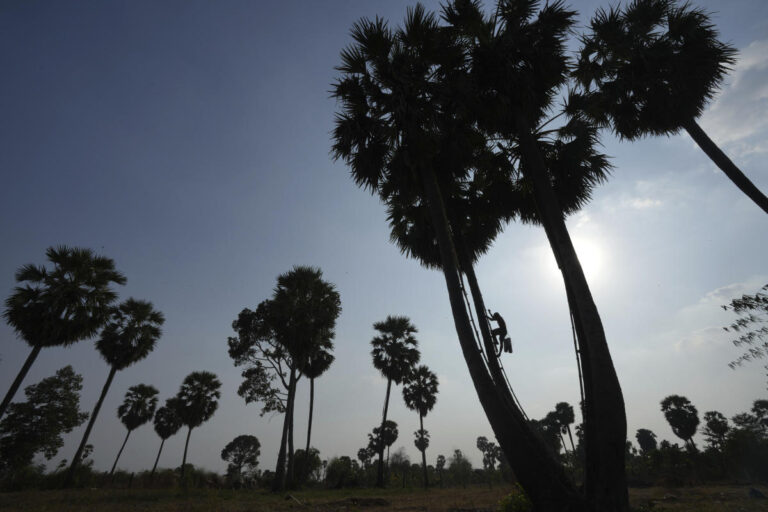PHNOM PENH, Cambodia (AP) — Chin Choeun spends nearly 12 hours a day collecting sap from palm trees and turning it into palm sugar with his wife.
The 54-year-old is proud to be one of Cambodia's most skilled palm tree climbers, having learned the technique from his father. But after 36 years of climbing tree after tree, Chown plans to retire in the next few years due to safety concerns due to his age.
“It was a job I inherited from my father. It's his legacy and I don't want it to end because of me. But I know it will end after me,” Chown said.
This work is hard work and dangerous, making it unattractive to his sons and grandchildren.
Unlike Chown's generation, who could only do farming, young people in rural Cambodia now have more options to earn a living. Many people moved to big cities and even countries like Thailand, South Korea, and Japan in search of work.
Chown, who has four children and 10 grandchildren, said, “I'm disappointed that my sons and grandchildren won't be able to follow in my footsteps, but I respect their decision.''
The climber makes an incision in the stump holding the fruit, ties it with a bamboo container, and collects the sap overnight. The next morning, we climb back up to collect the sap. This is cooked in a huge pot and slowly kneaded with a wooden stick until it thickens.
The job is tough. Mr. Chown works from 6 a.m. to 6 p.m., climbing 20 palm trees to collect sap. His wife, Chin Yi, boils the sap over an open flame and stirs it until the right consistency is achieved.
The sap he collects per day produces about 10 kilograms (22 pounds) of sugar. Choeun earns about 100,000 riel ($25) a day selling sugar to local traders.
Palm trees also play other important roles in the daily lives of Cambodians, especially in the countryside. Palm leaves are used to make roofs, hats, mats, and baskets, while the trunks are made into boats, furniture, souvenirs, and homes. Palmyra fruits are used in desserts such as palm cakes, and the flowers can also be made into sweet palm juice or to make alcoholic drinks.
The palm tree is considered the official tree of Cambodia. According to unofficial figures, there are between 3 million and 6 million wild palm trees growing across the country, but as urban areas expand, felling the trees is becoming more common.


